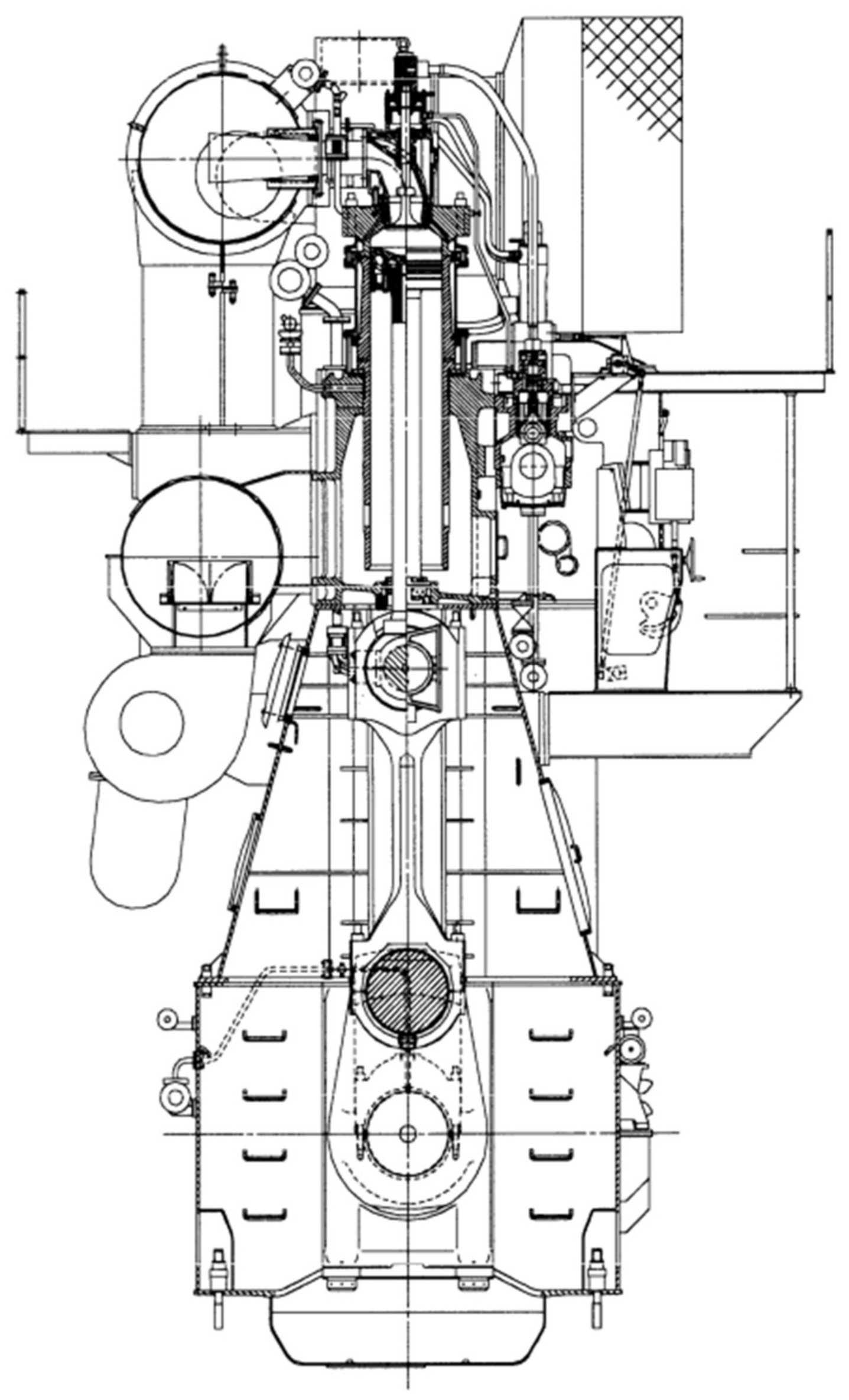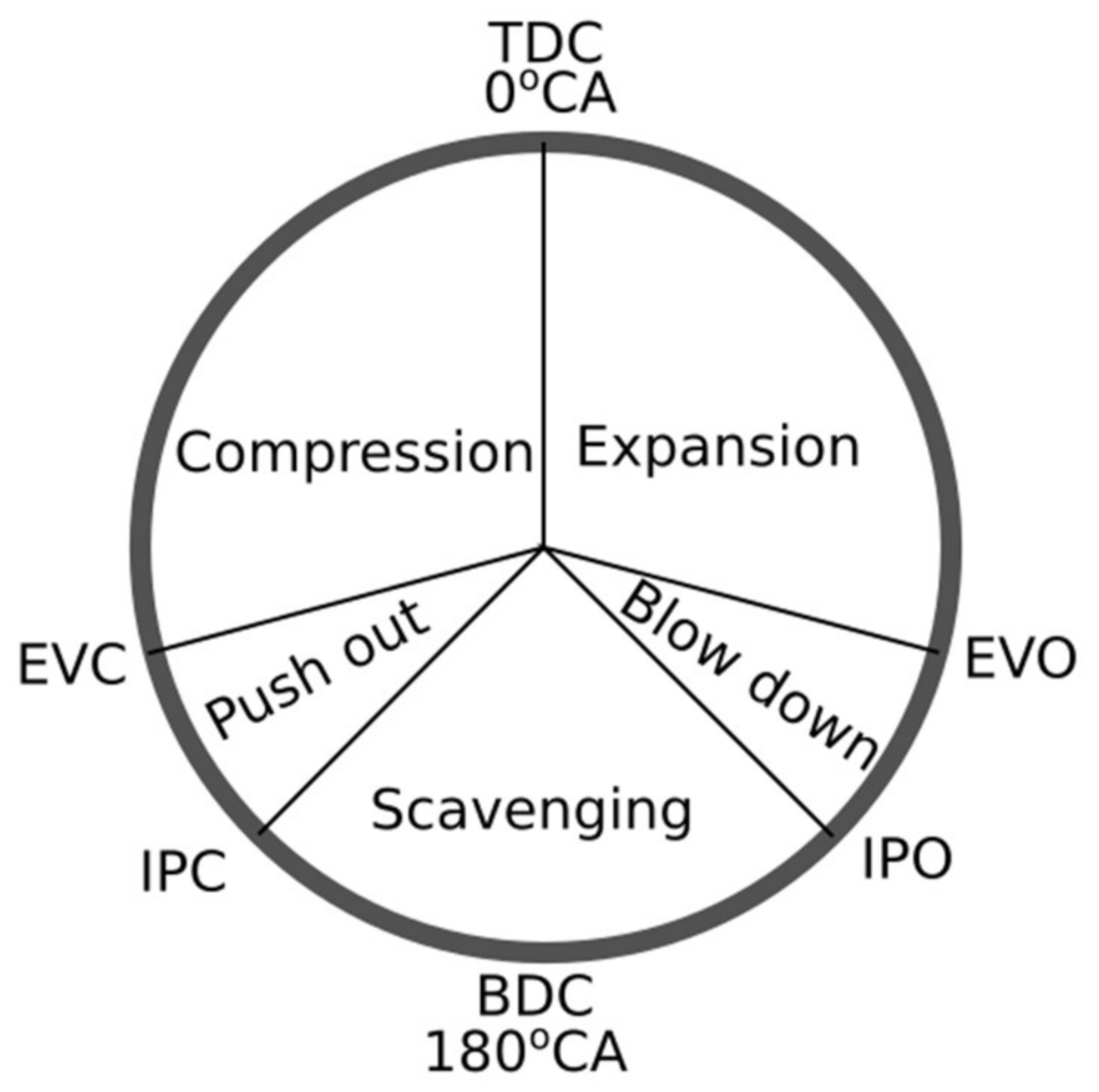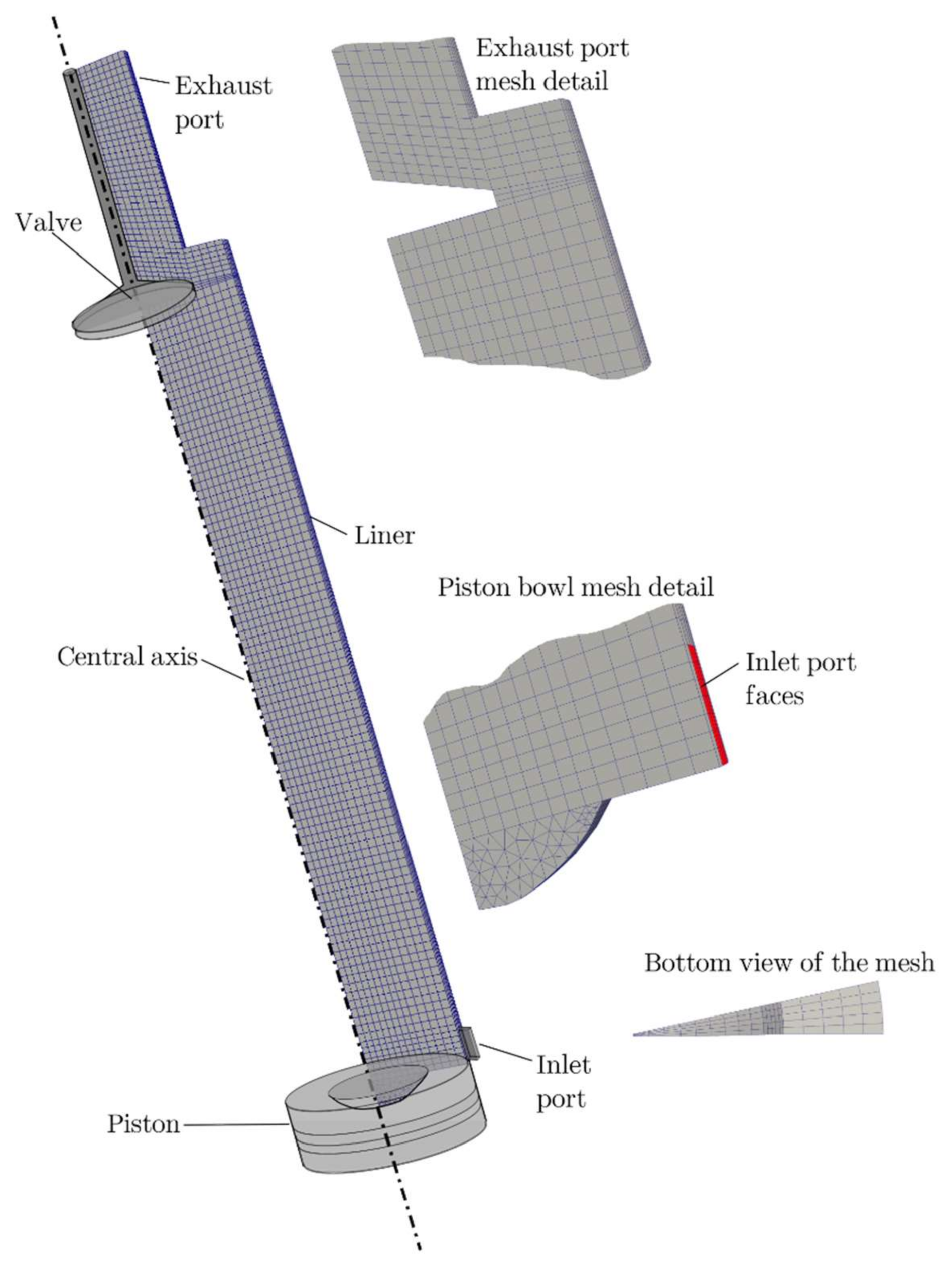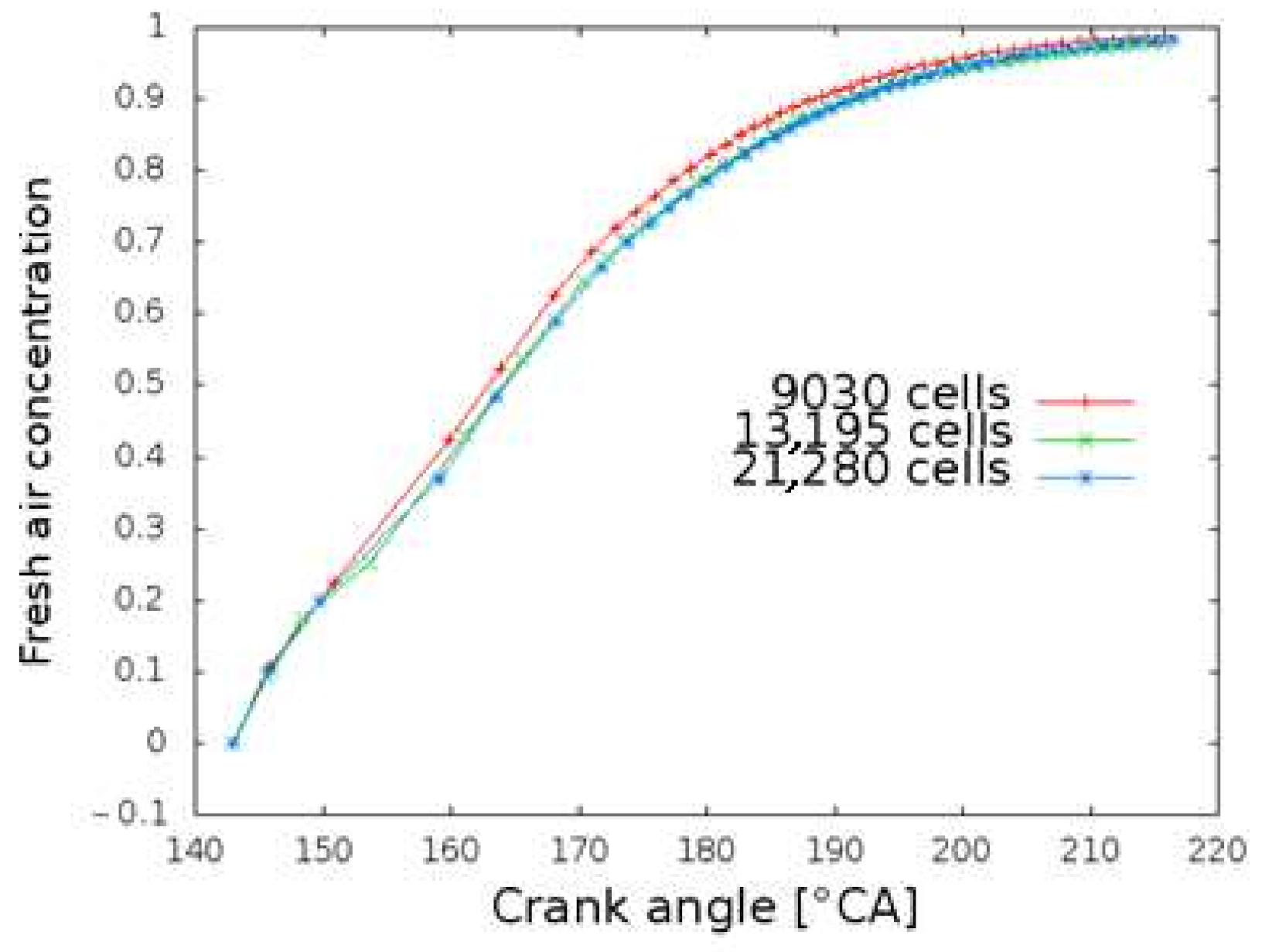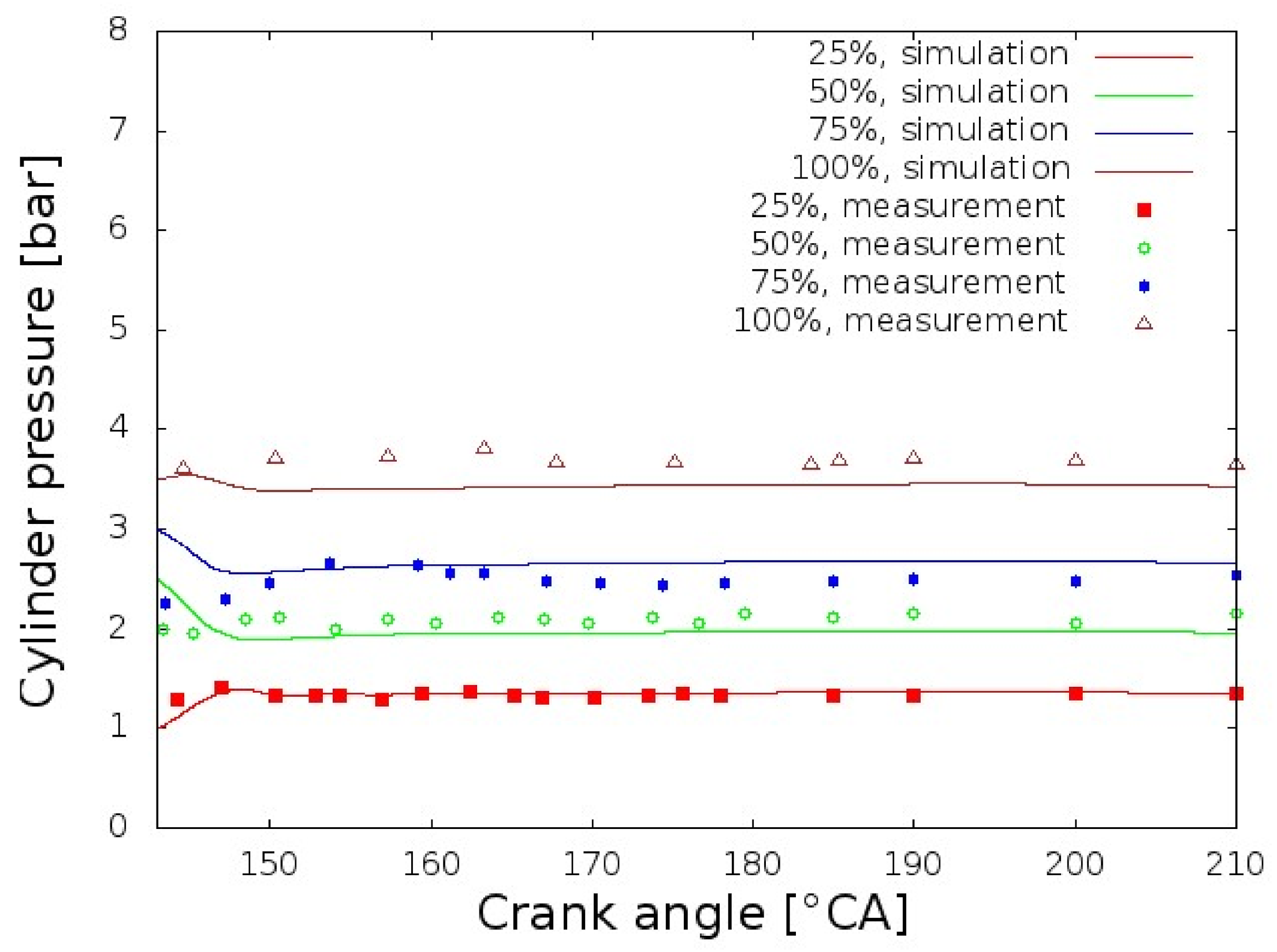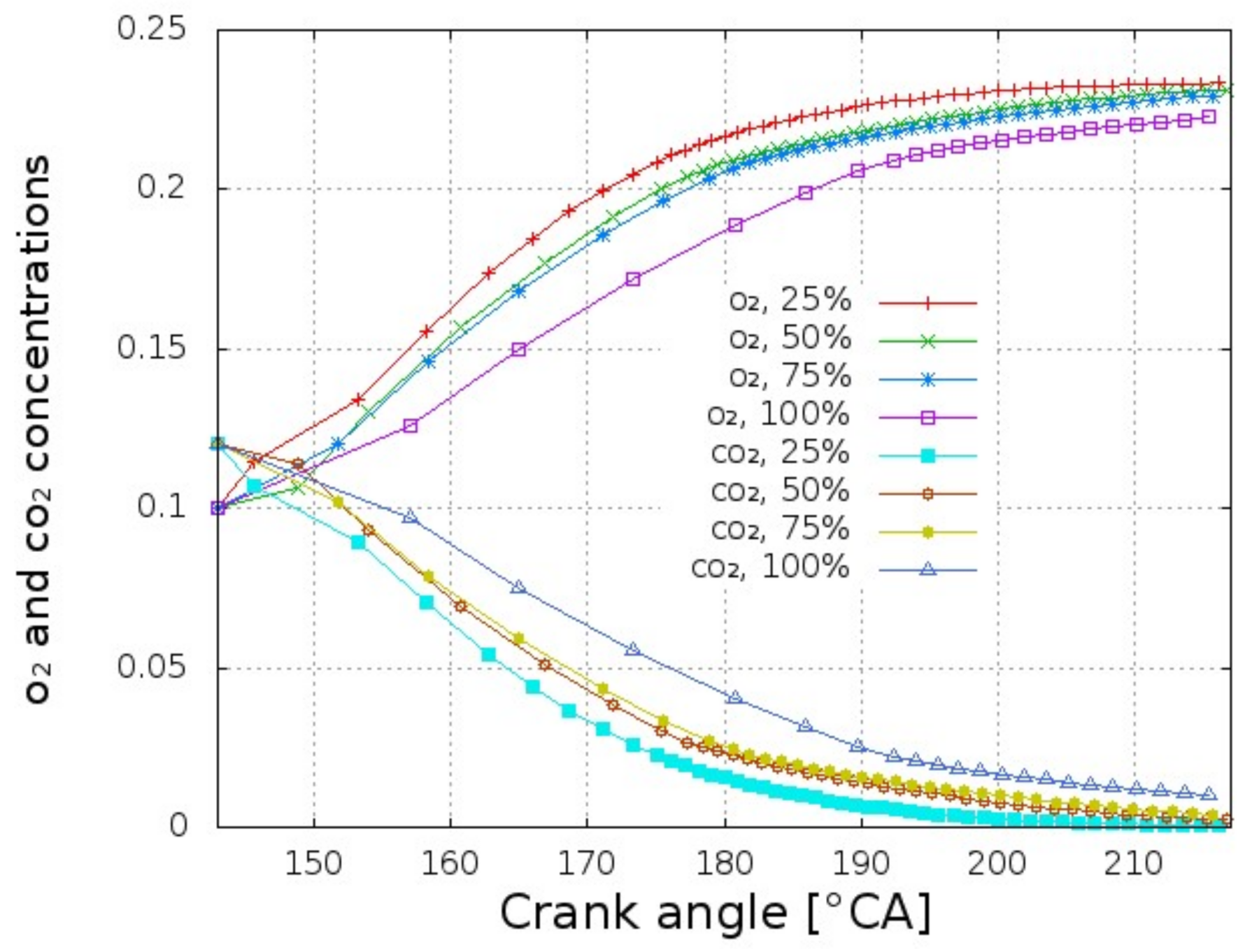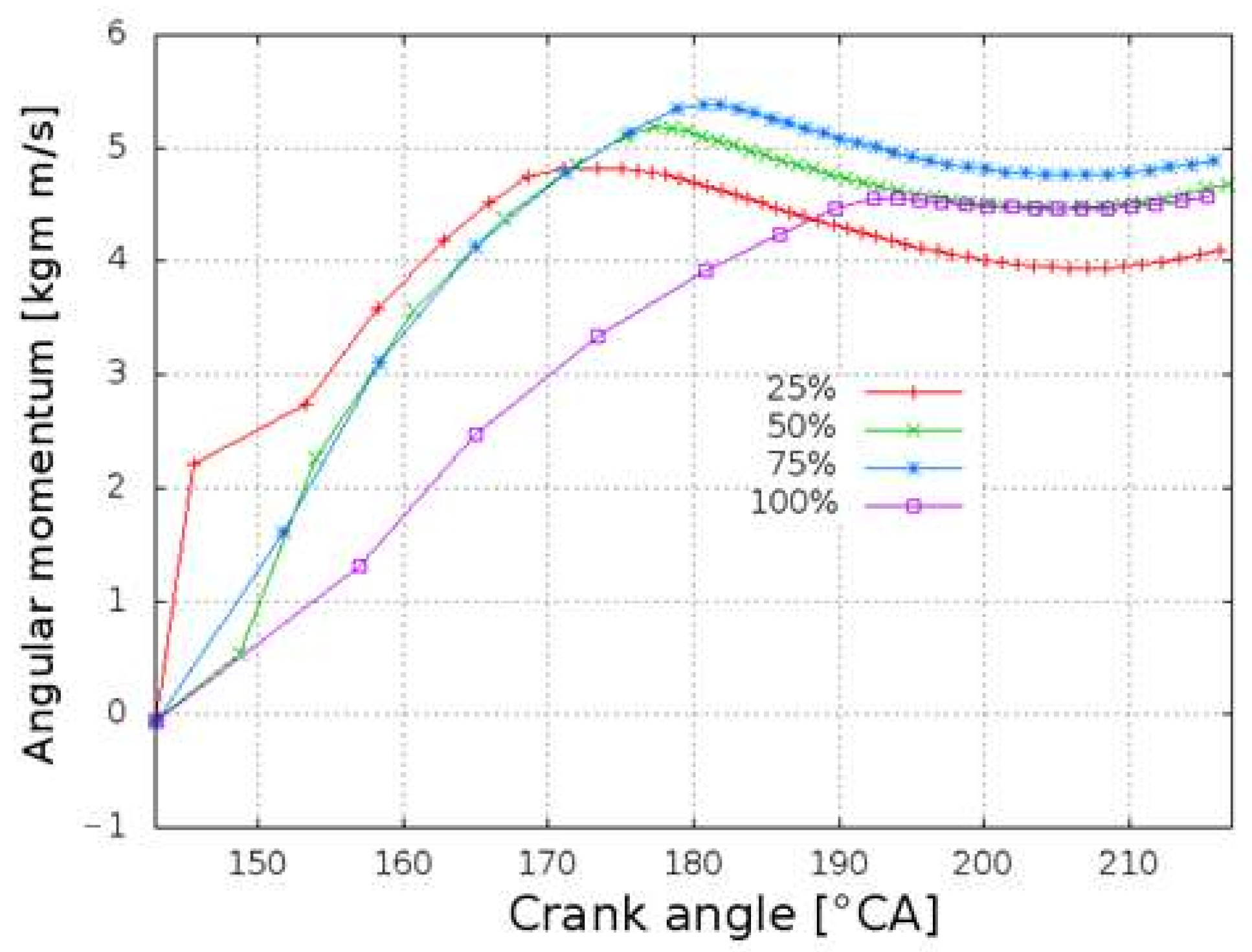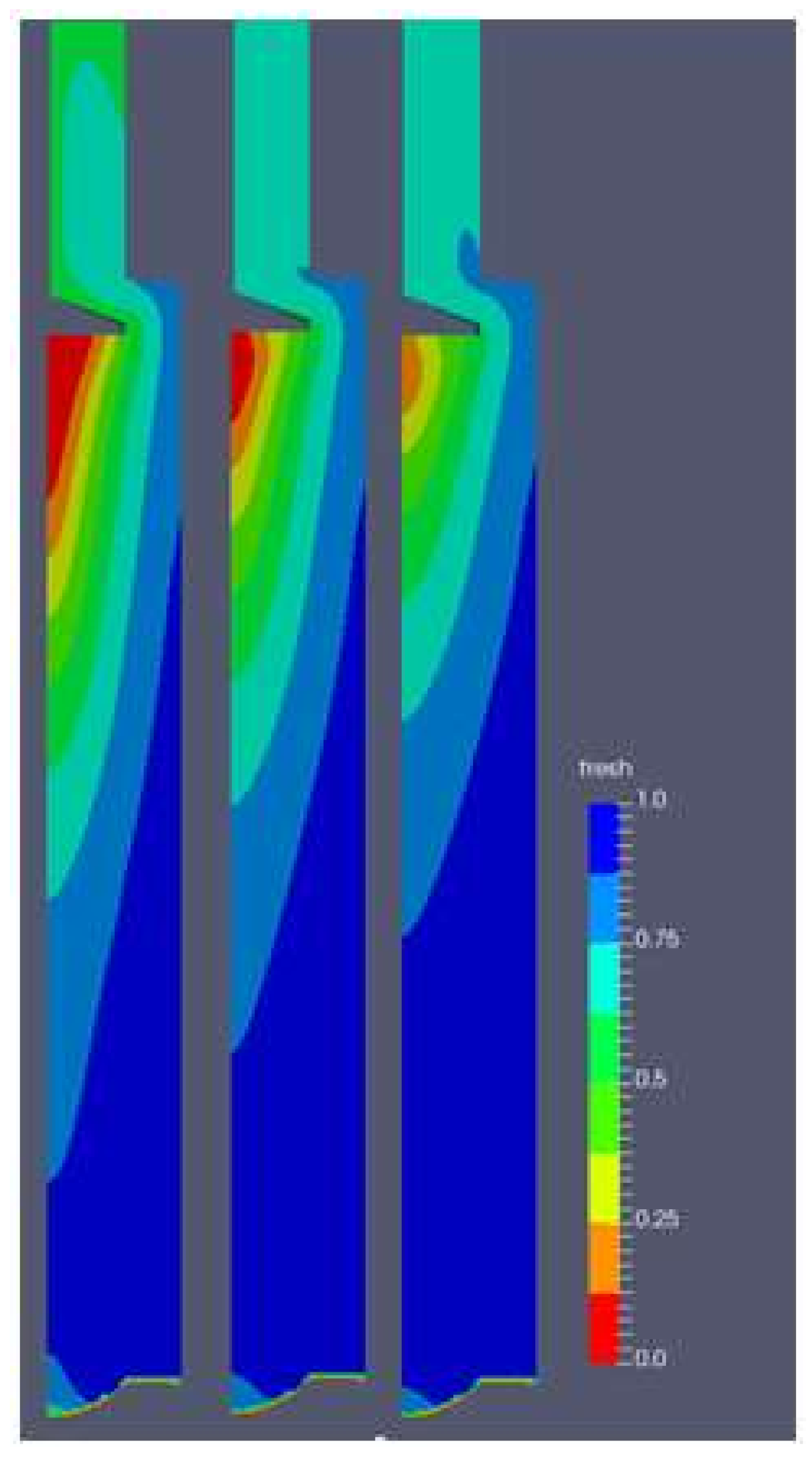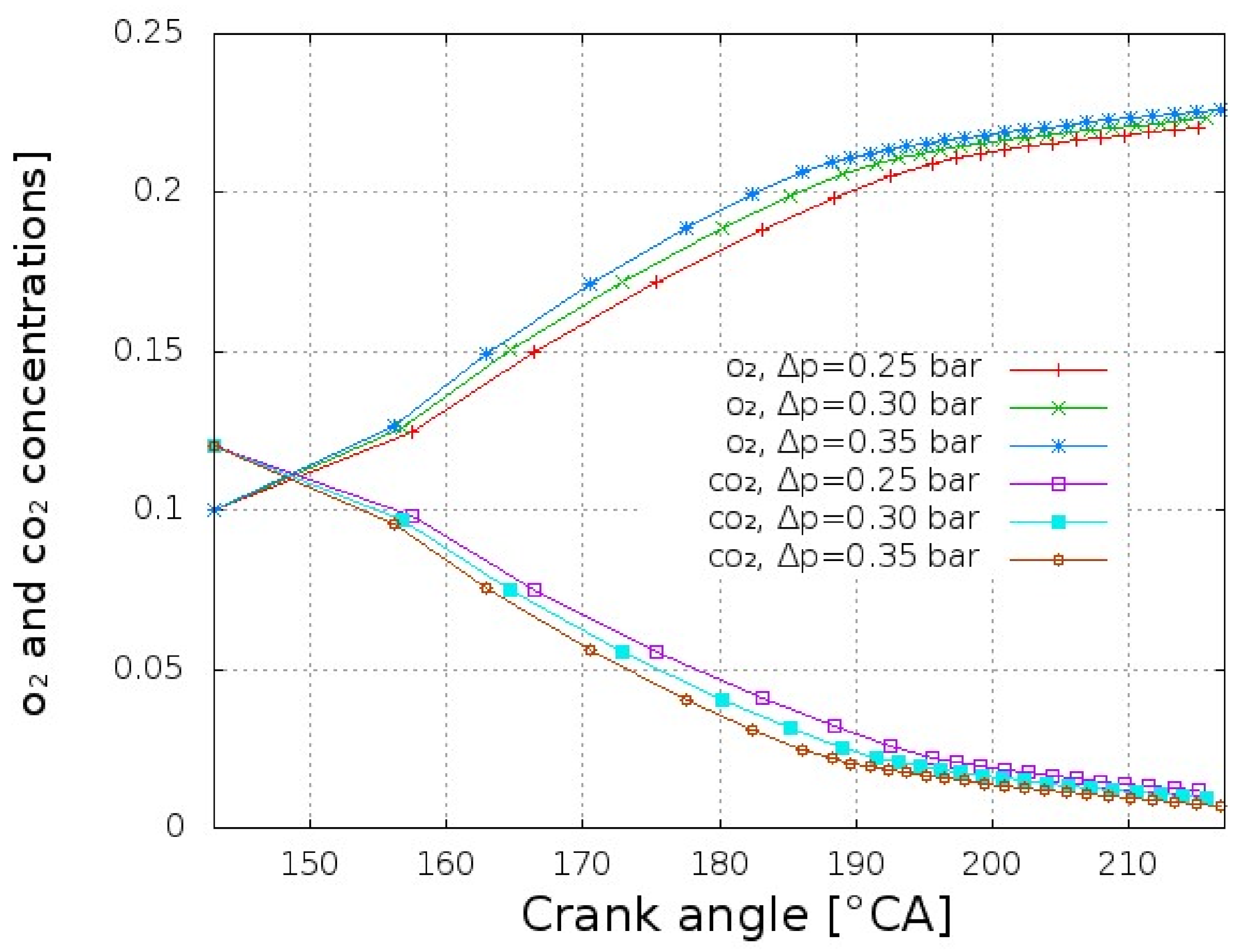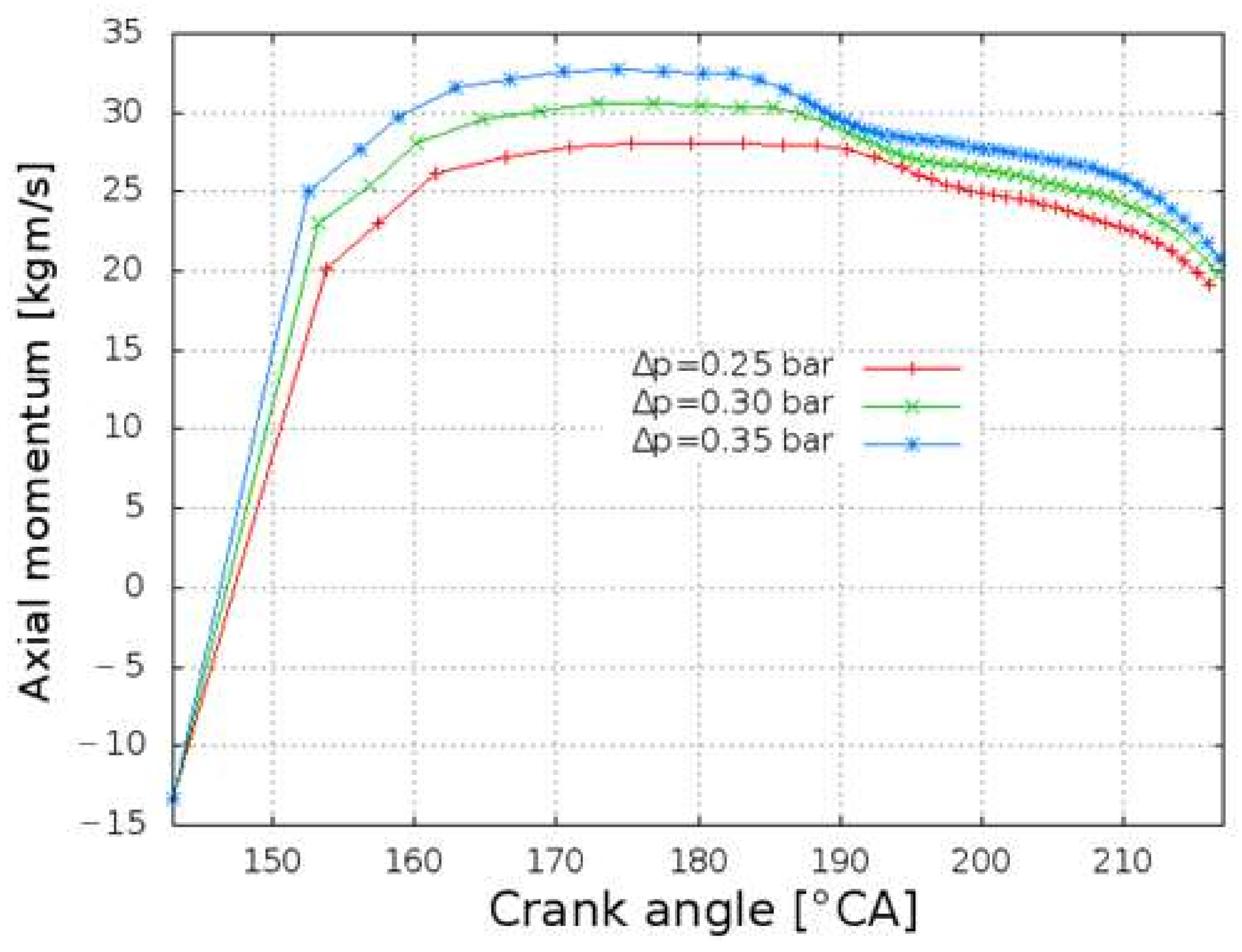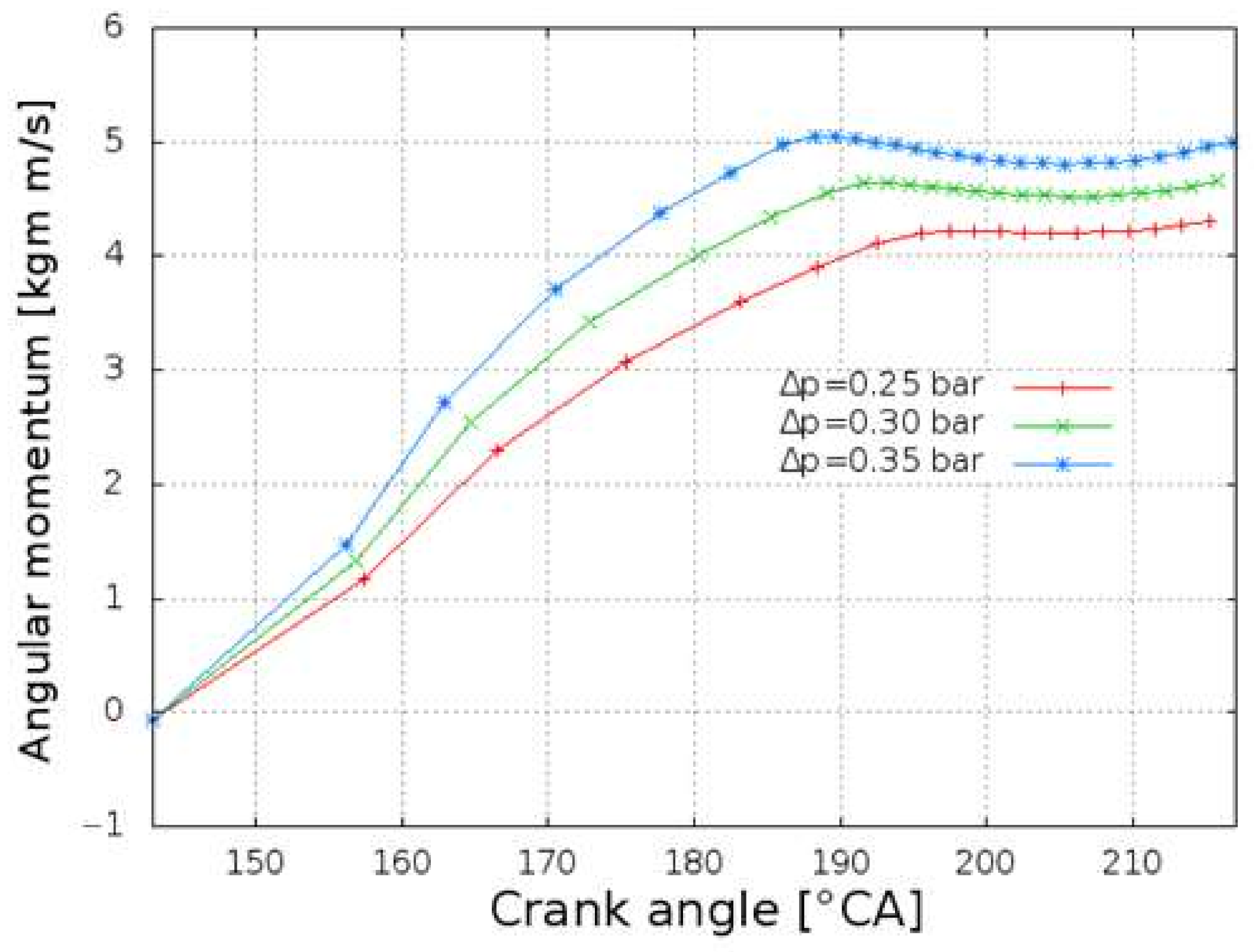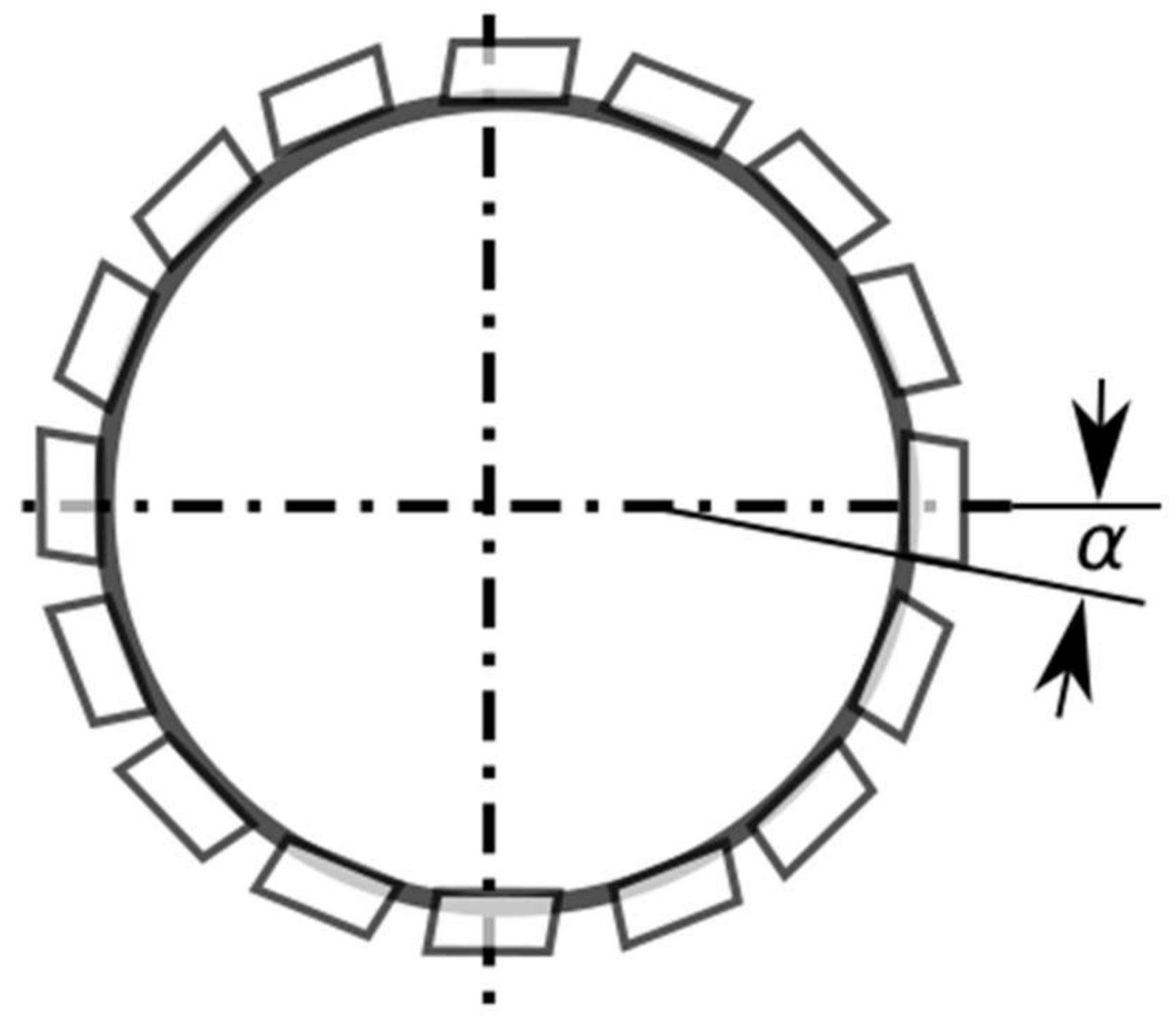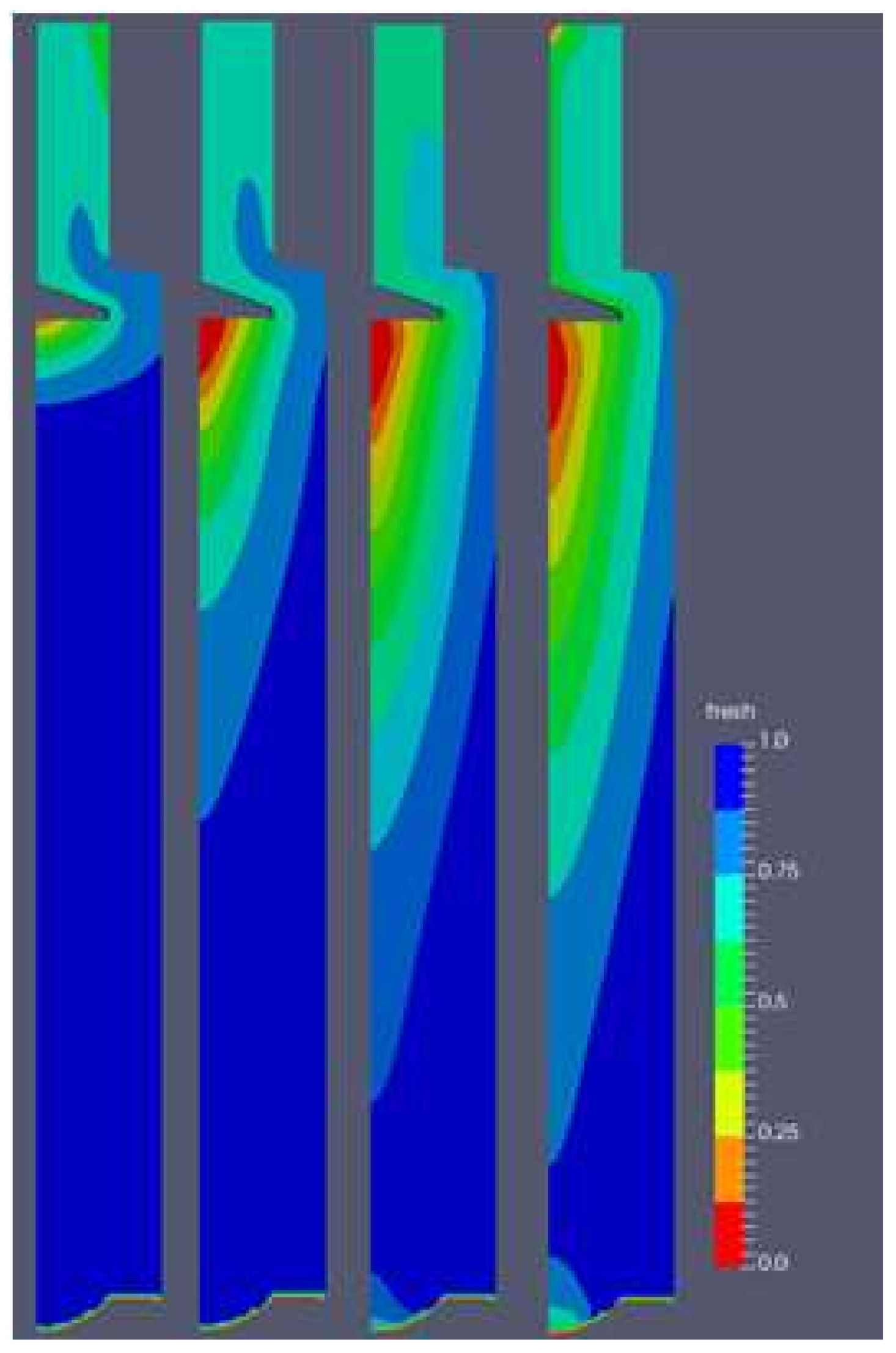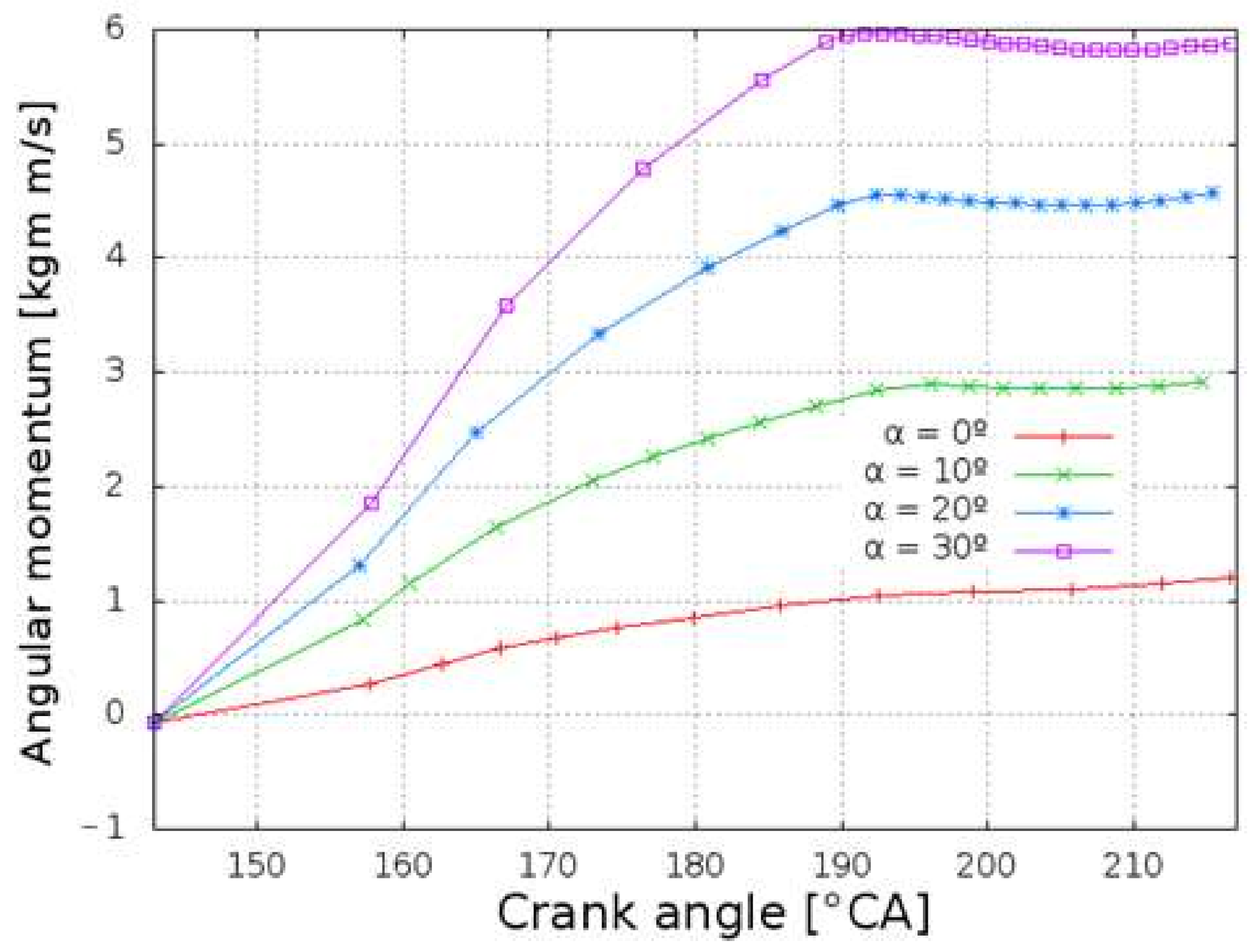1. Introduction
Sea transport was always very important for the world economy, since it is the most economical if the cost per ton of goods and per distance is the benchmark. The most efficient power device for the ship is the large, slow speed, two-stroke, diesel engine. The greenhouse gas emissions and other pollutants from fossil fuel combustion are an important topic. The maritime transport focused on the problem from the year 2000 [
1], and after it, the topic became more and more important and the emission limits ever stringent. The NOx emissions have to be cut by 75% in most coastal areas from the year 2016. Even if there are some other competing technologies, the two-stroke engine remains practically the leading propulsion solution for many cargo ship types. The usual scavenging method for this type of engine is the uniflow scavenging. On the top of the cylinder, there is a centrally mounted, hydraulically operated exhaust valve. On the bottom of the liner, there are radially located scavenging ports that are opened when the piston moves to the bottom dead center and uncovers the ports. The scavenging process is essential for expelling the combustion products and replacing them with fresh air from the scavenging receiver. The scavenging ports are oriented with an angle (usually 20°) to the radial direction. This induces a swirling motion to the entering fresh air. The swirling motion enhances the scavenging process, liner cooling, and the mixing of the fuel with the air. Scavenging is influenced by the engine geometry, valve and port opening timing, and pressure difference between the scavenging receiver and exhaust duct [
2]. The process is characterized by two typical problems: short-circuit losses and mixing. Short-circuit consists of escaping some of the fresh-air charge directly to the exhaust, and mixing means that there is a small amount of residual gases that remain trapped without being expelled. The process is hard to investigate because of the size and price of such engines and the relative scarcity of test engines worldwide. This is the reason for which CFD (Computational Fluid Dynamics) is the right tool to investigate the dynamics of the large marine diesel engine scavenging process. There are different types of commercial software that allow CFD analysis of engine processes. There are also some open-source projects that offer CFD analysis. OpenFOAM is such an open source, free of charge, CFD collection of solvers and libraries written in C++ [
3]. For its availability, flexibility, and the collaboration between users, it is a good platform to use to approach uncommon CFD problems. Engine scavenging simulation needs to allow moving boundaries (piston and valve), variable surface inlet port, and all that with a very large domain. The solver engineFoam (a part of OpenFoam) was used as a basis for the simulations presented in this article [
4,
5].
Similar problems were analyzed by several authors. Lamas et al. [
6] analyzed the scavenging process on a uniflow scavenged large marine engine by means of a CFD simulation. They used the ANSYS Fluent commercial software. To validate the numerical model, the in-cylinder pressure was compared with experimental measurements. The same authors in [
7] performed a similar analysis on an opposed piston, two-stroke, diesel engine. They reported the influence of the number of inlet and exhaust ports, their configuration, and their inclination to the radial direction on scavenging performances. Sigurdsson et al. [
8] developed an accurate CFD model of the scavenging flow in a marine diesel engine. The STAR-CD commercial software was used for the simulations and a 12° sector of the domain was simulated, corresponding to one of the thirty scavenging ports. The model was validated by comparing the tangential velocity for different discretization schemes and mesh densities and by comparing the simulated pressure to the experimentally measured one. They presented a detailed analysis of the scavenging flow and the conjugate heat transfer calculations for the piston crown.
Andersen in his PhD thesis [
9] and in the series of related articles [
10,
11,
12] performed a large marine engine scavenging process analysis. He used the OpenFOAM simulation software with the sliding interface and parallel computing functionality to get an advanced model of an experimental, two-stroke marine diesel engine. The model was validated by comparison to in-cylinder velocity measurements obtained with the Particle Image Velocimetry technique. The scavenging performances were analyzed for different operation points for various scavenge pressures and various scavenging port angles. A simple model to predict the scavenging process in marine two-stroke engines was derived.
Another thesis that analyzes the two-stroke engine scavenging process with OpenFOAM is that by Jönsson in [
13]. In his report, he presents the methodology and the results of simulations of the flow in a stratified charged two-stroke engine. OpenFOAM was used for the simulations, and the results were compared to those obtained with commercial 1D and 3D software. Xu et al. [
14] analyzed the swirl-loop scavenging process in an aircraft, two-stroke diesel engine. They observed the influence of the arrangement of the scavenge ports angles on engine performance. Particle Image Velocimetry experiments and Computational Fluid Dynamics (CFD) simulation are adopted to obtain the in-cylinder flow patterns.
Ghazikhani et al. [
15] performed an experimental analysis of the influence of ethanol additives on a two-stroke engine performance, including on scavenging performances. Foteinos et al. [
16] developed a phenomenological, three-zone, two-stroke engine scavenging model based on CFD simulation results. Ma et al. in [
17,
18,
19] performed different analysis of the scavenging process of an opposed-piston folded cranktrain diesel engine. The tracer gas method is used to validate the accuracy of the scavenging profile. Wu et al. [
20] analyzed the scavenging process of a two-stroke, free-piston engine. They used a 3D CFD model to investigate and optimize a wide range of parameters and obtained an 11% gain in scavenging efficiency. Jia et al. [
21] analyzed the influence of valves and scavenging ports timing on the performance of a free-piston engine using Ricardo WAVE software. There were several other authors [
22,
23,
24,
25] that improved the understanding of the two-stroke engine scavenging process. Other investigations focus on advanced CFD methods that are used for complex marine problems based on implicit large eddy simulation and high-order methods [
26,
27,
28]. Some important numerical details on low Mach number flows are presented in [
29,
30,
31].
In the present paper, a CFD simulation of the gas exchange process during the scavenging of a large marine, two-stroke engine was performed. The free, open-source software OpenFOAM was used with a simplified sector mesh. The complex mesh (moving piston, moving valve, variable scavenging port area) was handled without sophisticated mesh manipulation procedures. Instead of using slidingInterface boundaries to connect and disconnect to the scavenging ports, the pressureDirectedInletVelocity boundary of the variable area was used. The short simulation time gave an opportunity to perform the simulation of several different cases.
After the introduction section where a contest and literature review were provided, the mathematical background is presented, including the scavenging parameters that were used. In the same section, some details about the engine used were provided alongside the description of the mesh generation process. Finally, in the second section, the validation of the model and the simulation procedure is provided. In the third section, the results are reported and discussed for the different operating regimes. First, the engine operation on different loads, then the scavenging process for different pressure differences among the scavenging and exhaust receiver, and finally, the influence of the scavenging port angle on the scavenging performance. The last section summarizes the conclusions of the analysis performed.
